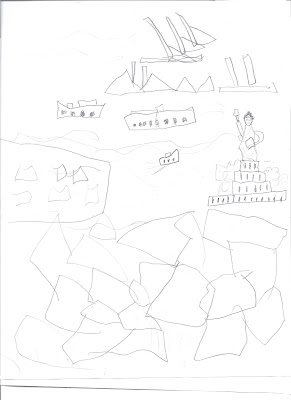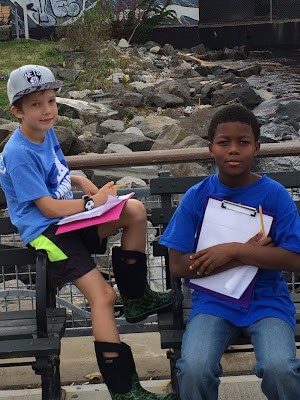 Using fabric, twigs, and blocks... that is just what these Kindergarteners did.
Using fabric, twigs, and blocks... that is just what these Kindergarteners did.
 |
| Rolling in the wavy ocean. |
 |
| Building a coral reef. |
 |
| Part of the reef. |
 |
| And a passenger ship... |






























































